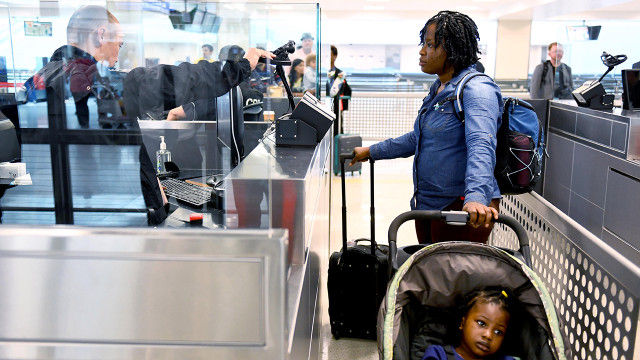Frequently Requested Statistics on Temporary Visas in the United States
- Editor-In-Chief

- Feb 13, 2020
- 3 min read
Published on MARCH 14, 2019 by MigrationPolicy.org
How many people have temporary visas?
According to the most recently available Department of Homeland Security (DHS) estimates at the time of this writing, 2.3 million immigrants on various temporary visas resided in the United States during 2016, up from about 2 million in 2015. Almost half (1,100,000) were temporary workers and their families, followed by 870,000 foreign students and their families (40 percent).
Sixty-one percent were from Asia. Nationals of countries in Europe and North America accounted for 15 percent each. The top five countries of origin—India, China, Mexico, Canada, and South Korea—accounted for 57 percent of all residents on temporary visas.
Note: This estimate of temporary visa holders includes temporary workers, international students, exchange visitors, diplomats, and representatives of foreign governments and international organizations. It excludes tourists and other short-term visitors. North America includes Canada, Bermuda, Mexico, Central America, and the Caribbean.
How many people entered the United States on nonimmigrant visas?
In 2016, 42.7 million individuals entered the United States as I-94 nonimmigrants on various temporary visas. On average, each I-94 nonimmigrant was admitted 1.8 times. This is the first time the DHS Office of Immigration Statistics (OIS) estimated the number of unique individuals who came temporarily, as opposed to the number of nonimmigrant admissions or entries.
Most of these nonimmigrants, 34.2 million, entered as tourists, followed by 3.7 million business visitors. Of these, 15 million tourists and 1.7 million business travelers were from Visa Waiver countries. Further, 1 million international students entered on F-1 visas. OIS estimated that additionally about 290,300 individuals were admitted on high-skilled worker H-1B visas (mostly from India, China, Canada, the United Kingdom, and Mexico) and 81,600 on nonagricultural temporary or seasonal worker H-2B visas (mostly from Mexico, Jamaica, Guatemala, South Africa, and Canada).
How many nonimmigrant visas does the State Department issue?
In FY 2018, the annual number of nonimmigrant visas issued by the State Department decreased for the third time to 9 million—a 7 percent decline from the 9.7 million issued in FY 2017.
The Trump administration implemented a number of policies in 2017 and 2018 that could lead to a decline in admissions, including the travel ban barring individuals from certain countries from U.S. entry, lengthened visa application processes, and greater discretion for consular officers to deny visas. From FY 2015 to FY 2018, visa refusal rates for tourists and business travelers from travel-ban countries increased significantly: all applications from North Korea were denied, followed by Somalia (90 percent), Iran (88 percent), Yemen (83 percent), Syria (77 percent), and Libya and Venezuela (74 percent each). Furthermore, during the same period, visa refusal rates rose for visitors from some major non-travel ban countries, including Mexico (from 20 percent to 25 percent), mainland China (from 10 percent to 17 percent), and India (from 24 percent to 26 percent).
Three-quarters of the 9 million nonimmigrant visas issued in FY 2018 were temporary business and tourist visas (B and BCC visas).
The next largest visa class was for academic students and exchange visitors and their family members (F and J visa categories), who comprised around 8 percent of all nonimmigrant visas issued in FY 2018. The third largest group of nonimmigrant visas was given to temporary workers and trainees and their family members (H visa categories), who comprised 7 percent of nonimmigrant visas.
Looking at the distribution of temporary visas issued in 2018 by region of origin, the largest shares were issued to nationals from Asia (43 percent), North America (22 percent, including Mexico, Central America, and the Caribbean), and South America (18 percent). The remainder: Europe (12 percent), Africa (6 percent), and Oceania (0.7 percent).
Note: The number of visas issued does not necessarily match the number of foreign nationals who entered the United States in the same year because some nonimmigrant visas may not be used.
Read the State Department’s Report of the Visa Office 2018.
How many nonimmigrant admissions does DHS grant in a year?
In total, DHS granted 181 million nonimmigrant admissions in 2017, of which 103 million were admissions of Canadians traveling for business or pleasure and Mexicans who possess a nonresident Border Crossing Card (i.e., laser visa). These travelers are exempt from completing the I-94 arrival/departure form at the port of entry, thus DHS does not provide characteristics for this group.
In 2017, there were 77.6 million total temporary admissions of I-94 nonimmigrants, a slight uptick from 77.1 million in 2016. (See Table 3.)
Written by: Jie Zong, Jeanne Batalova, and Micayla Burrows








Comments